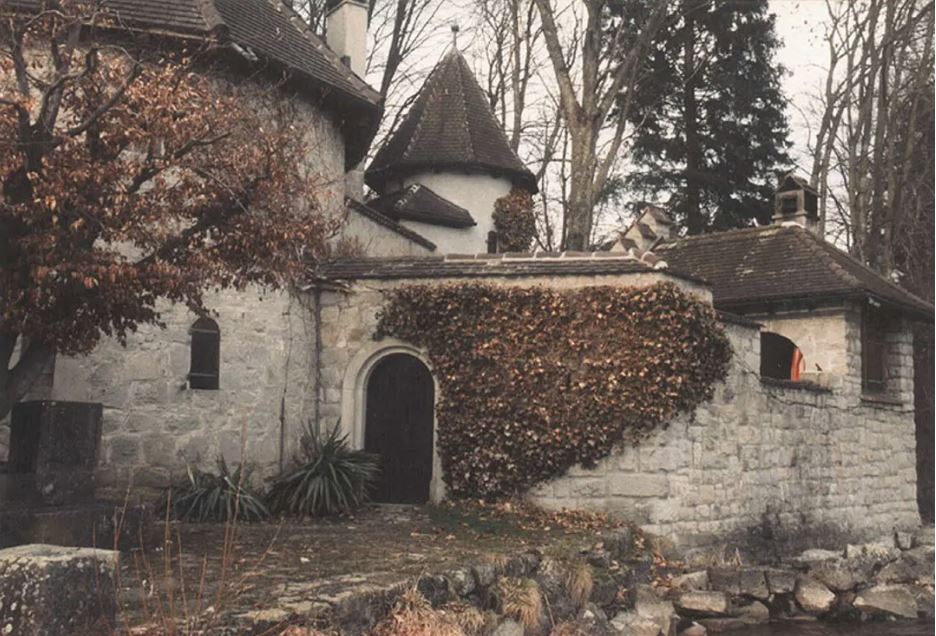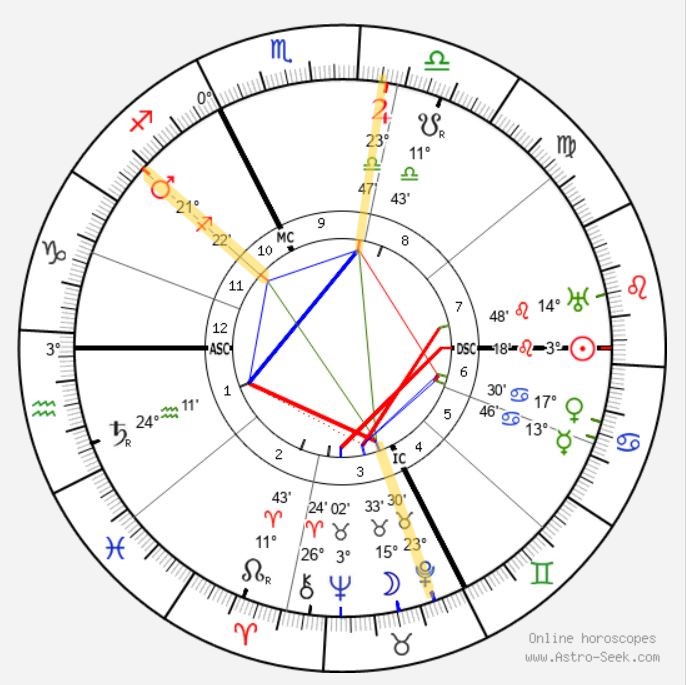Inspired by Carl Jung, Dane Rudyar emphasized transpersonal astrology. In the first chapter of his 1975 booklet, From Humanistic to Transpersonal Astrology, he writes:
“In this circular, I quoted Carl Jung, whose discourse given at Wilhelm’s funeral I had read two or three months before. I did not get fully acquainted with Jung’s ideas until the summer of 1933 while staying at Mrs. Garland’s ranch in New Mexico, where I read all his then-translated books. At once, the idea that I could develop a series of connections between Jung’s concepts and a reformulated type of astrology came to me.”
And It Began With A Dream
Carl Jung had a remarkable dream in 1909 that brought forth the idea that the composition of the soul resembles a dwelling. This dream proved to be fundamental to his work and life. Jung writes about his amazing dream in his autobiographical book Memories, Dreams, Reflections (p 196-197)
“I was in a house I did not know, which had two stories. It was “my house.” I found myself in the upper story, where there was a kind of salon furnished with fine old pieces in Rococo style. On the walls hung a number of precious old paintings. I wondered that this should be my house and thought “not bad.” But then it occurred to me that I did not know what the lower floor looked like.
Descending the stairs, I reached the ground floor. There everything was much older. I realized that this part of the house must date from about the fifteenth or sixteenth century. The furnishings were medieval, the floors were of red brick. Everywhere it was rather dark. I went from one room to another thinking “now I really must explore the whole house.”
I came upon a heavy door and opened it. Beyond it, I discovered a stone stairway that led down into a cellar. Descending again, I found myself in a beautifully vaulted room which looked exceedingly ancient. Examining the walls, I discovered layers of brick among the ordinary stone blocks, and chips of brick in the mortar. As soon as I saw this, I knew that the walls dated from Roman times. My interest by now was intense.
I looked more closely at the floor. It was of stone slabs and in one of these I discovered a ring. When I pulled it, the stone slab lifted and again I saw a stairway of narrow stone steps leading down to the depths. These, too, I descended and entered a low cave cut into rock. Thick dust lay on the floor and in the dust were scattered bones and broken pottery, like remains of a primitive culture. I discovered two human skulls, obviously very old, and half disintegrated. Then I awoke.”
Jung said of this amazing dream:
”My dream thus constituted a kind of structural diagram of the human psyche; it postulated something of an altogether impersonal nature underlying that psyche. It ‘clicked,’ as the English have it – and the dream became for me a guiding image … It was my first inkling of a collective a priori beneath the personal psyche.”
Jung Made His Dream Real and Tangible
Jung designed two homes along the shores of Lake Zurich in the early 20th century. He built these to accommodate his daily needs and to articulate the dimensions of his conscious and unconscious mind in their architecture.
The Kusnacht House

The first was a grand house that he shared with his wife and five children. It was lavishly appointed and reflected his growing stature as a physician and psychiatrist.
The Bollingen Tower

After his mother’s death, Jung built a second house that was isolated and primitive. It was built with his own hands, using stone and tools from the Middle Ages.
Jung writes in his autobiography:
“in the tower at Bollingen it is as if one lived in many centuries simultaneously. The place will outlive me, and in its location and style it points backwards to things of long ago.”
Bollingen Tower was Jung’s personal spiritual retreat. It was here he could partition off the “vastness of the outside world,” live a spartan life, put his hands in the earth, and work through psychological issues with physical and creative pursuits.
Jung retreated here to write Memories, Dreams, Reflections, and The Red Book. He said Bollingen is the “stone representation of my innermost thoughts and of my knowledge.”
Carl Jung’s Birth Chart
Jung was born on July 26, 1875, at 7:24 PM BMT in Kesswil, Switzerland. Rodden rating C (rectified.) He’s a Sun Leo, Taurus Moon, with Aquarius rising, but I’m primarily looking at the highlighted Yod configuration.

The “Finger of God”
Individuals with a Yod (“Finger of God,” sometimes called “The Finger of Fate”) in their birth chart often seem driven by some mystical force that’s beyond their control and are compelled to complete some mysterious mission. (For more about Yods, read -. A Yod: The Finger of God, Ted Turner, Prince, and Hitler )
Carl Jung’s Yod
Jung’s yod consists of Mars in 21 Sagittarius sextile Jupiter in 23 Libra. Mars and Jupiter team up and point “The Finger of God” at Pluto in 23 Taurus. He also has the Moon and Neptune in Taurus. Venus, the ruler of Taurus and Libra, is in Cancer, indicating the value he placed on home and family.
With Mars in Sagittarius, Jung had a drive for knowledge and understanding. The ruler of Sagittarius, Jupiter, is in Libra. Jupiter in Libra indicates that Jung was generous, wise, and had strong interpersonal abilities that greatly enhanced his talents and skills.
The strength, wisdom, understanding, and visionary quality of this Mars /Jupiter sextile points God’s finger at Pluto in Taurus in his 3rd house.
Pluto is a transpersonal planet representing the deepest, darkest part of the collective unconscious and metamorphosis. Taurus is about tangible reality and is often considered the builder. Venus rules Taurus, which makes Venus in Cancer the ruler of Pluto in Taurus. While his Taurus Moon rules Venus and Mercury in Cancer.
It seems that “The Finger of God” had directed Jung to find value in (Taurus) the collective unconscious (Pluto.) It could be that Jung was fated to build a structure that gave the collective unconscious a tangible home. Jung made his dream into something real and tangible when he built his home, Bollingen Tower, on Lake Zurich in Switzerland. .
Home was everything for Jung. It was a place to reside; it described our individual reality, and it provided a map of our collective evolution.
Carl Jung and the Horoscope
Jung saw the horoscope as a “structural diagram” of the psyche and used a patient’s horoscope as a diagnostic tool in his analytic practice.
He writes in his Collective Works:
“The basic meaning of the horoscope is that, by mapping out the positions of the planets and their relationship to one another together with the distribution of the signs of the zodiac at the cardinal points, it gives a picture first of the psyche and then the physical constitution of the individual. It represents, in essence, a system of original and fundamental qualities of a person’s character, and can therefore be regarded as an equivalent of the individual psyche.”

